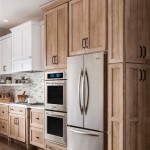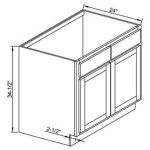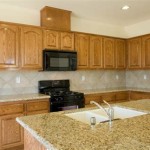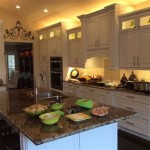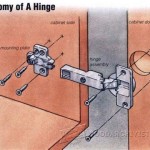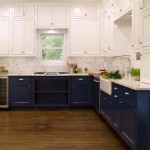Integrating a Wine Rack into Kitchen Cabinetry: A Comprehensive Guide
The integration of a wine rack into kitchen cabinetry represents a marriage of functionality and aesthetics, catering to wine enthusiasts who desire both convenient storage and a stylish display. Incorporating a wine rack within kitchen cabinets allows for efficient use of space, protection from light and temperature fluctuations, and a seamless blend into the overall kitchen design. This article examines the various factors to consider when planning and implementing a wine rack within kitchen cabinets, including design options, material choices, installation techniques, and preservation considerations.
The decision to incorporate a wine rack into kitchen cabinets offers several advantages. Firstly, it provides dedicated storage for wine bottles, preventing them from being scattered across countertops or stored in unsuitable locations. Secondly, it can contribute to the aesthetic appeal of the kitchen, adding a touch of sophistication and personalization. Finally, it offers protection for the wine itself. When properly implemented, the enclosed environment of a cabinet can shield wine from direct sunlight, excessive heat, and drastic temperature changes, all of which can negatively impact the wine's quality and longevity.
Key Point 1: Design Considerations for Wine Rack Integration
The design phase is crucial in determining the functionality and visual appeal of the integrated wine rack. Several factors must be carefully considered, including the available space, the desired capacity, the type of wine to be stored, and the existing kitchen design.
Space Allocation:
Before choosing a design, assess the available space within the kitchen cabinets. Consider the dimensions of the cabinet area where the wine rack will be located, taking into account any obstructions like pipes or electrical wiring. Accurate measurements are essential to ensure the wine rack fits properly and allows for easy access to the wine bottles. It is also important to consider how the wine rack will affect the surrounding cabinet space. Will shelves need to be removed or adjusted? Will access to items stored in adjacent cabinets be compromised?Capacity Planning:
Determine the number of wine bottles the rack should accommodate. This will depend on the user's wine collection and storage needs. A small rack might be sufficient for occasional wine drinkers, while a larger rack is necessary for collectors. Consider future needs as well. Will the wine collection likely grow over time? Planning for future expansion can prevent the need for costly modifications later. Thinking about how much you are willing to budget for a rack can impact how many wine bottles you will fit in the space.Rack Orientation:
There are several common orientations for wine racks within cabinets: horizontal, vertical, and tilted. Horizontal storage is generally preferred for long-term storage, as it keeps the cork moist and prevents it from drying out and crumbling, which can lead to oxidation. Vertical storage is suitable for wines intended for short-term consumption. Tilted racks offer a visually appealing display while providing partial cork contact. The choice of orientation will depend on the user's storage preferences and the type of wine being stored. Vertical storage racks may be more readily available and cheaper than horizontal racks.Style Matching:
The style of the wine rack should complement the overall design of the kitchen. Consider the color and finish of the existing cabinets, countertops, and other kitchen elements. Options range from traditional wooden racks to modern metal designs. A cohesive design will create a unified and aesthetically pleasing space. Consider the color of your hardware as well. Matching the finish of the rack to your existing hardware can create a seamless look.Accessibility:
Design the wine rack to allow for easy access to the bottles. Ensure there is sufficient clearance around the rack to reach in and retrieve bottles without difficulty. Consider the height of the rack and its placement within the cabinet. Locating the rack at a convenient height will prevent the need for bending or stretching, making it easier to access the wine bottles.Key Point 2: Material Selection and Construction
The choice of materials for the wine rack significantly impacts its durability, aesthetics, and preservation properties. Common materials include wood, metal, and acrylic, each offering distinct advantages and disadvantages.
Wood:
Wood is a popular choice for wine racks due to its natural aesthetic appeal and durability. Different types of wood, such as oak, maple, and redwood, offer varying levels of resistance to moisture and temperature fluctuations. Redwood is particularly well-suited for wine storage due to its natural tannins, which can help preserve the wine. Wood racks can be customized with various finishes, such as stains, varnishes, and paints, to match the kitchen’s decor. However, wood is susceptible to warping and cracking if exposed to excessive moisture or temperature changes.Metal:
Metal wine racks offer a more modern and industrial aesthetic. Stainless steel and wrought iron are common choices, providing durability and resistance to rust and corrosion. Metal racks are also easy to clean and maintain. They can be designed in various shapes and sizes, offering flexibility in design. However, metal racks may not provide the same level of insulation as wood racks and can be more prone to transmitting temperature changes to the wine bottles. They are also typically more expensive than wood racks.Acrylic and Plastic:
Acrylic and plastic wine racks offer a lightweight and contemporary option. These materials are resistant to moisture and easy to clean. Acrylic racks are transparent, allowing for a clear view of the wine bottles. Plastic racks are available in various colors and styles, offering design flexibility. However, acrylic and plastic racks may not be as durable as wood or metal racks and can be susceptible to scratching and discoloration over time. They also may not provide the same level of insulation as wood racks.Construction Methods:
The construction method used to assemble the wine rack also impacts its durability and stability. Common methods include dowel joinery, screw joinery, and metal brackets. Dowel joinery involves using wooden dowels to connect the pieces, providing a strong and seamless connection. Screw joinery involves using screws to secure the pieces, offering a more robust connection. Metal brackets provide additional support and reinforcement. The choice of construction method will depend on the material used and the desired level of durability.Finishing Touches:
Apply protective finishes to the wine rack to enhance its durability and aesthetic appeal. Varnishes, stains, and paints can protect the wood from moisture and UV damage. Powder coating can protect metal racks from rust and corrosion. Clean and smooth all surfaces to prevent splintering or scratching. Consider adding decorative elements, such as carved details or metal accents, to enhance the wine rack's visual appeal.Key Point 3: Installation and Environmental Control
Proper installation is essential to ensure the wine rack functions correctly and integrates seamlessly into the kitchen cabinetry. Furthermore, maintaining a stable and controlled environment within the cabinet is crucial for preserving the quality of the wine.
Cabinet Preparation:
Before installing the wine rack, prepare the cabinet space by removing any existing shelves or hardware. Clean the interior of the cabinet to remove dust and debris. Measure the dimensions of the cabinet space to ensure the wine rack fits properly. Consider adding a liner to the bottom of the cabinet to protect it from spills and condensation. A non-slip liner can also help prevent wine bottles from sliding around.Rack Installation:
Install the wine rack according to the manufacturer's instructions. Use appropriate hardware, such as screws or brackets, to secure the rack to the cabinet walls. Ensure the rack is level and stable. Avoid over-tightening the screws, which can damage the cabinet walls. If installing a custom-built rack, carefully measure and cut the pieces to ensure a precise fit. Pilot holes can help prevent splitting when screwing into wood.Ventilation:
Proper ventilation is crucial for maintaining a stable temperature and humidity level within the cabinet. Consider adding ventilation holes or slots to the cabinet doors or walls to allow for air circulation. Avoid placing the wine rack near heat sources, such as ovens or dishwashers, which can cause temperature fluctuations. A small fan can also be used to circulate air within the cabinet. Another factor to consider when ventilation is the placement of the cabinet. Windows and exterior walls can impact the temperature inside.Temperature Control:
Maintaining a consistent temperature is essential for preserving the quality of wine. The ideal storage temperature for most wines is between 55°F and 65°F (13°C and 18°C). Avoid storing wine in areas with significant temperature fluctuations. Consider using a temperature monitoring device to track the temperature inside the cabinet. If the temperature fluctuates excessively, consider adding insulation to the cabinet walls or using a small wine cooler to maintain a consistent temperature.Humidity Control:
Maintaining proper humidity levels is crucial for preserving the corks of wine bottles. The ideal humidity level for wine storage is between 50% and 70%. Low humidity can cause the corks to dry out and shrink, leading to oxidation. High humidity can promote mold growth and damage the wine labels. Consider using a humidity monitoring device to track the humidity level inside the cabinet. If the humidity is too low, consider adding a humidifier. If the humidity is too high, consider adding a dehumidifier or improving ventilation.Lighting:
Limit exposure to direct sunlight and artificial light, as UV rays can damage the wine. Consider using LED lighting, which produces minimal heat and UV radiation, to illuminate the wine rack. Avoid using fluorescent or incandescent lighting, which can emit significant amounts of heat and UV radiation. Use tinted glass or UV-blocking film on the cabinet doors to further protect the wine from light exposure.By carefully considering these design, material, and installation factors, individuals can successfully integrate a wine rack into their kitchen cabinetry, creating a functional and aesthetically pleasing storage solution for their wine collection. Ongoing monitoring of temperature and humidity ensures the ideal environment contributing to long-term wine preservation within the cabinet.

Introducing 3 Great Ways To Update Your Kitchen Cabinets Cabinet Wine Rack Design Corner

Kitchen Cabinet Wine Racks And Other Storage Ideas Kraftmaid

Built In Wine Rack Design Ideas

Built In Wine Rack Base Units Diy Kitchens

5 Inspirational Kitchen Wine Racks Solid Wood Cabinets Blog

Easy Wine Rack For Metod Kitchen Cabinet Ers

Built In Wine Rack Design Ideas

Wine Storage Cabinet Organization Diamond Cabinetry

Plywell Ready To Assemble 36x15x12 In Shaker Wall Wine Rack White Swxwr3615 The Home Depot

Kitchen Makeover Update Getting To The Finish Line In My Own Style
Related Posts

